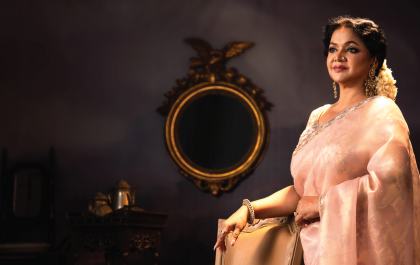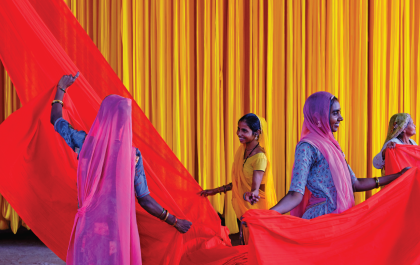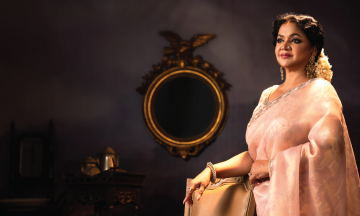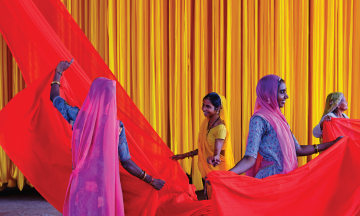Exploring the trippy world of synesthesia
By Abak Hussain
When you sign your initials, do you think of a specific color combination? Maybe the letters “HL” to you are, and always will be, yellow and light blue, like the flag of Ukraine, while “RT” brings to mind faded orange and pitch black, like the sun setting on a dark horizon.
Or maybe, like the majority of the population, you don’t feel that letters have their own inalienable colors. Sure, they could be assigned specific colors, like in some refrigerator magnets or wooden blocks for children (A is yellow, B is red, etc) but those are, perhaps, arbitrary choices, and could just as easily be mixed around with no harm done.
There are children around the world who have argued vehemently, much to the consternation of their parents, that the colors of the lettered blocks were “wrong.” Nothing would persuade them otherwise. For a long time, this phenomenon was treated as a mere quirk, not worthy of serious discussion, but now we know that if your child confidently proclaims that G should be lime green, then she is probably a synesthete, and we would be better off trying to understand her rather than correct her. But what exactly is this trippy, fascinating, and wonderful phenomenon known as “synesthesia”? What good can come of recognizing it, understanding it, and explaining it a bit better?
CROSSED WIRES
In simple terms, synesthesia is when one type of sensory input or simulation leads to a perception or an experience in a different cognitive pathway. Normally, we think of the five senses – sight, sound, smell, taste, and touch – as discrete, each their own thing. Sure, they support and bolster each other, and senses coalesce in our minds all the time. There is nothing unusual about that. When asked to think of the word apple, we may simultaneously imagine its color, the way it smells, the smooth texture of its skin, the satisfying sound of that first bite into it, and of course, that satisfying sweet-tart taste.
But synesthesia is a whole other ballgame on the neurological level, because synesthetes experience sensory stimulation with no apparent connection. A dog bark, for example, may taste like custard. A number, or a day of the week, may have a specific texture – imagine “Tuesday” being rough like sandpaper and “Friday” being velvety. And of course, letters can have colors – and synesthetes will not be truly convinced otherwise, though they may decide to be quiet about it, due to the judgmental attitude of the world towards neurodivergent people.
It is important to make clear that synesthesia is a perceptual phenomenon and a way of the brain working, rather than some objective reality that only a few neurodivergent folks are privy to. In other words, two “sound-to-color” (chromesthesia) synesthetes listening to the same piece of music might both visualize a barrage of colors, but they would probably not agree on what those colors are. An F-sharp for one may be red, for another may be blue. So, for all its exciting potential, at this point we can safely put aside the question of whether the synesthete brain may be key to some transcendental truth. That does not appear to be the case.
However, the implications of synesthesia towards creativity, memory, emotion, learning, and the elusive concept of “genius” might be enormous. People have, for ages, wondered what makes certain brains so special. What makes a Vladimir Nabokov (famous synesthete), a Vincent van Gogh (speculated to have been a synesthete), or a Beyonce (self-proclaimed synesthete)? Is synesthesia something we are born with, or is it trainable? Is it even desirable, or should it be seen as an oddity at best? And the most profound and tantalizing question: What other mysteries can synesthesia unlock about the uncharted depths of the human mind?
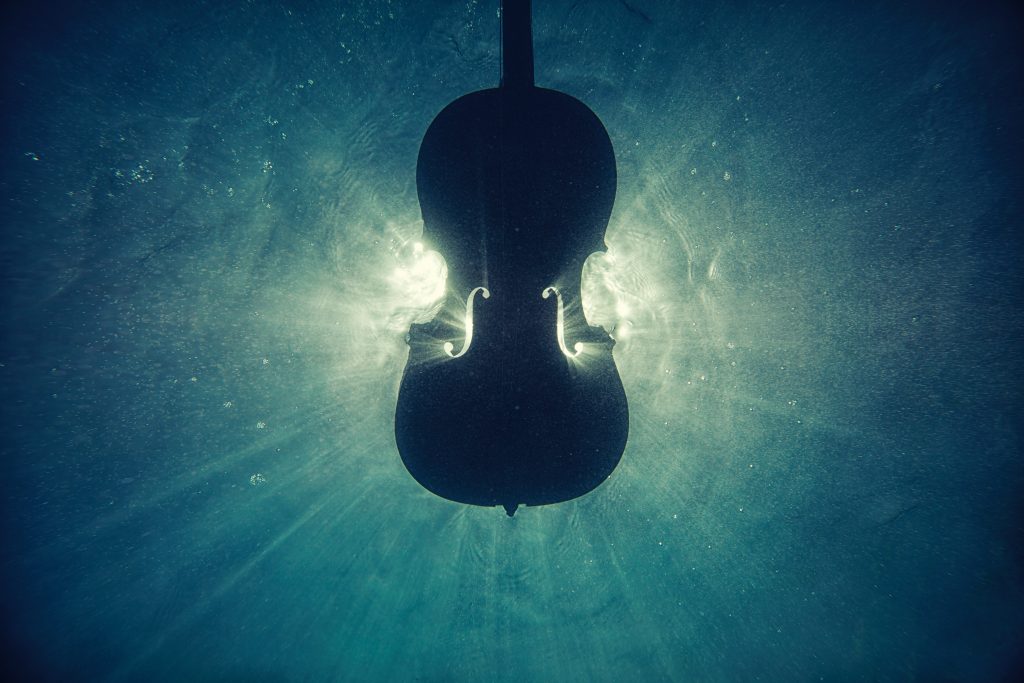
Photo by Josep Molina Secall
WHEN THE BRAIN DOES UNUSUAL THINGS
As we move forward into becoming a more and more tolerant, empathetic species, it is good to see greater acceptance and empathy towards those with synesthesia, as well as serious scientific attempts to understand the good it could do if certain practices were introduced to those born without this gift.
A study done at the University of Sussex in the UK has demonstrated that nine-weeks of intensive training can indeed help subjects visualize colors in association with texts. The potential benefits are fairly obvious. We have long known that the brain is an association machine, and the more associations we are able to create in our heads, the stronger our recall. Memory athletes use complex memory palaces to remember random things like the order of a shuffled deck of cards – something that appears impossible to normal people.
Synesthesia blows open the roof for the possibility of mental association. Imagine if the sequence of tastes in a deliberately designed multiple-course meal could help you remember a credit card number. This may seem a bit offbeat, but with the combination of synthesia and memory techniques, it is not so far-fetched.
When it comes to nurturing children with signs of synesthesia, we should encourage their sensory crossovers instead of trying to set them straight. If your child says she can taste the music, or that the doorbell is burnt toast, it may help to ask further questions to find out her thought process. If the regimented assignments from school are stifling her natural creative expression, a parent could set aside a bit of time each weekend to let the child explore and grow in their own way, alongside the routine of the curriculum.
Works of tremendous creative originality may well come from trying to paint a Chopin concerto, cook up a dish that tastes like a Picasso painting, or create a perfume that has the scent of TS Eliot’s angst from “Prufrock.” Our most inventively inspired works often cross bridges – artists take something and turn it into something else that normal folks could not have imagined. When Ernest Beaux was stationed up in the Russian Arctic, the whiteness of the snow and the vast, frigid seascape inspired him – not to paint or to write a poem of despair – but to create a fragrance that captured the essence of that environment.
Even if you are not familiar with the name of Beaux, you are, without a doubt, familiar with the name of scent. It is, after all, the best-selling fragrance of all time, and it goes by the name Chanel No. 5.
Abak Hussain is Contributing Editor at MW Bangladesh





